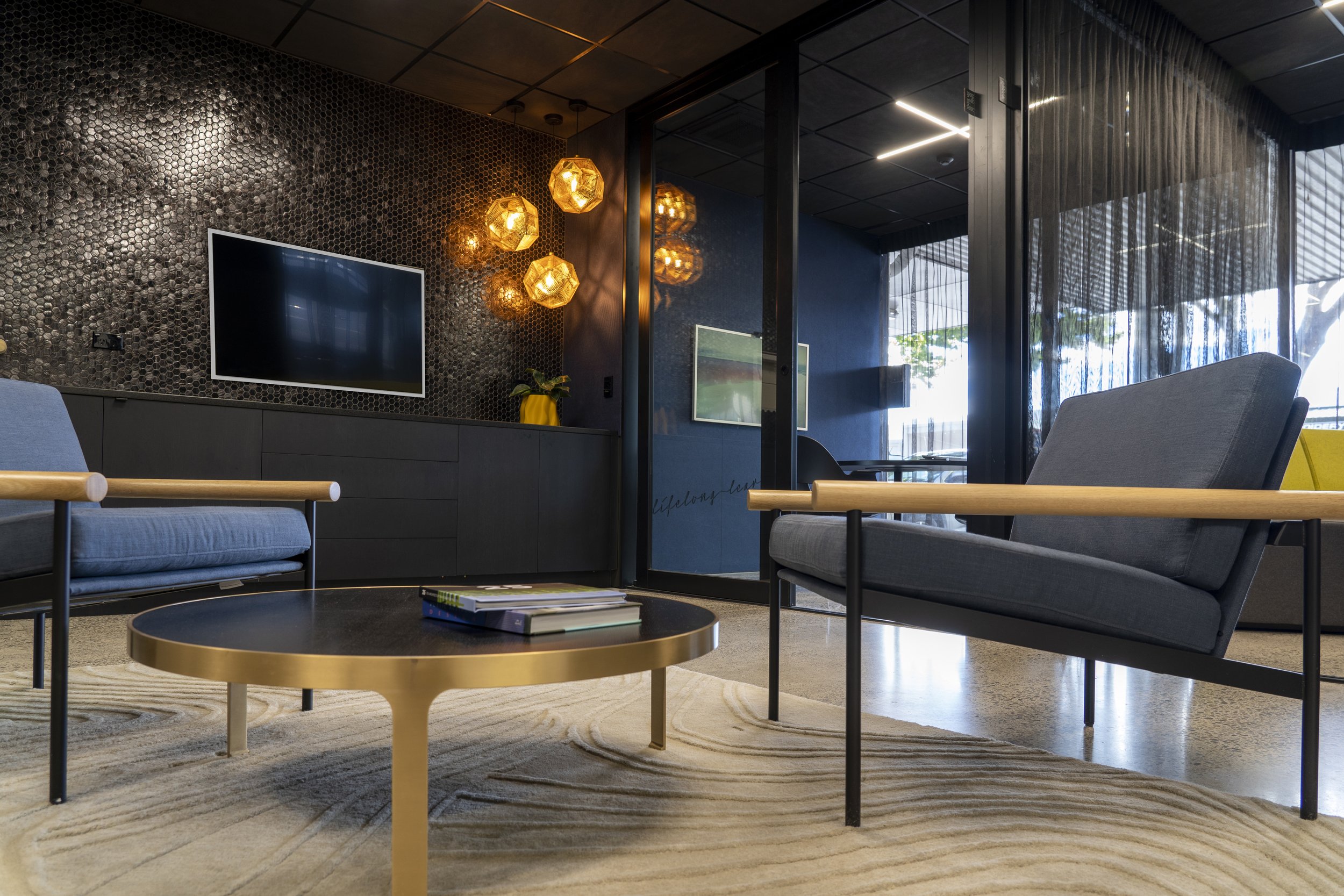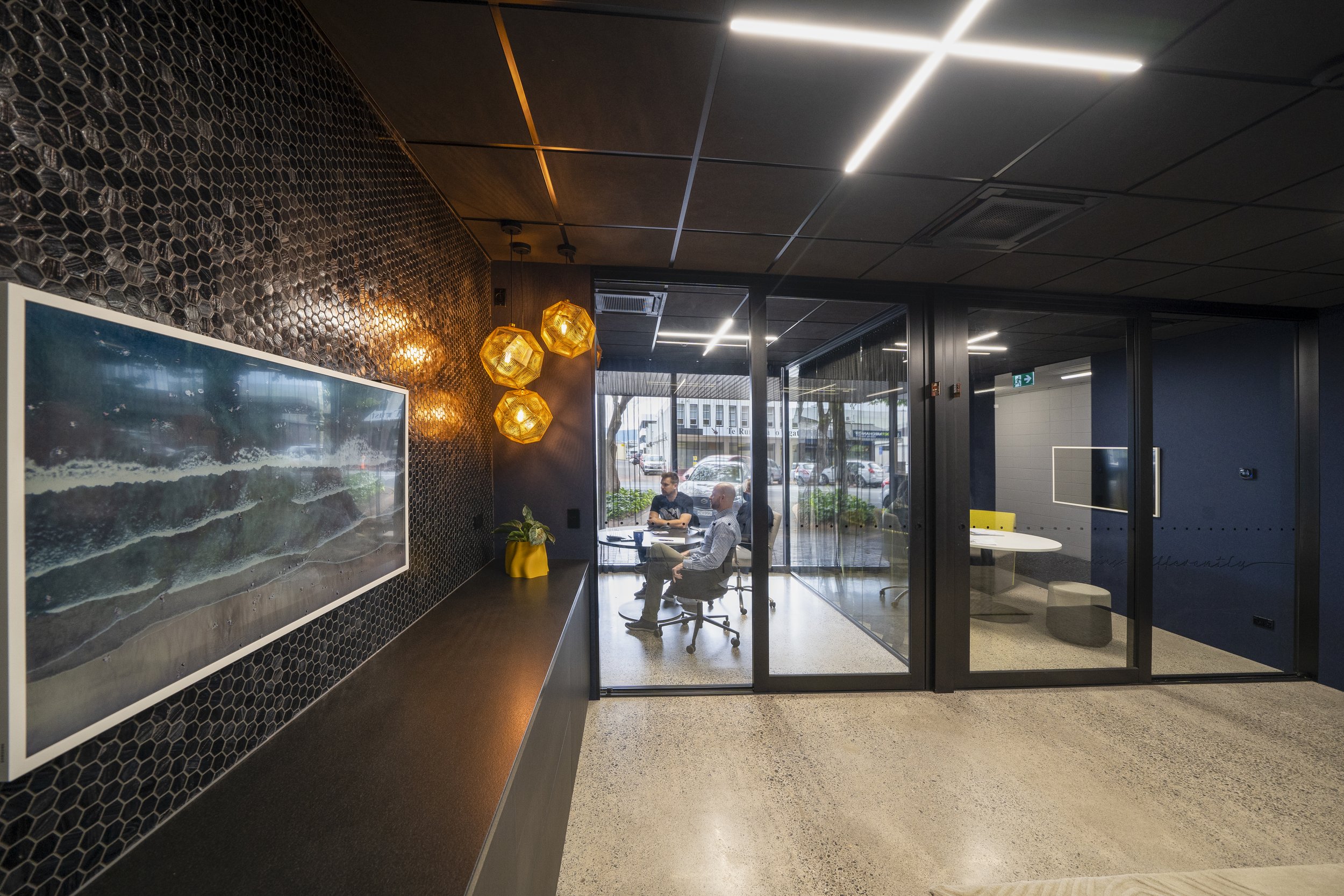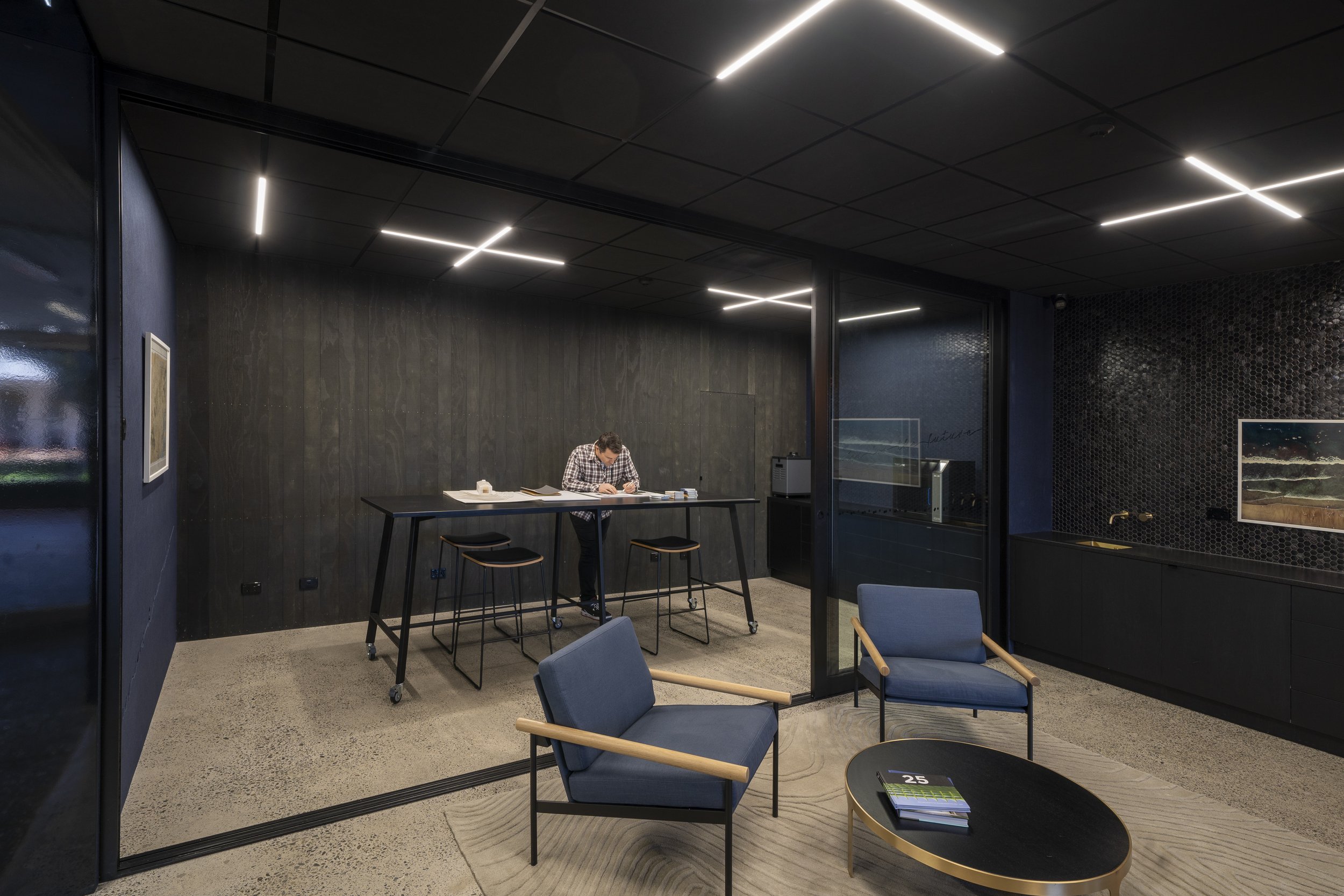DCA Client Lounge
Sector: Interiors
Location: Rotorua
Status: Completed 2022
Size: 170m²
DCA Architects had acquired an old retail space on the ground floor of their existing office building for the use of creating a client receiving space, meeting rooms and a model-making studio. Some of the key drivers were for the design to not have a space dedicated to a reception counter, but to create a corporate lounge where clients could wait with a beverage before being ushered into meeting spaces.







There was also an overriding desire to create a flexible space that could transform for a larger group entertaining space for presentations and social gatherings. The location of the Model making studio beside the lounge and fully glazed was deliberate to leverage the opportunity for clients to see real-time model-making. As we were our own client – we needed to ensure the space didn’t reflect a particular trend or style, but conveyed a comfortable and functional space that used quality materials.
In a deliberate move it was decided to leave the lounge open to hallway entry to entice and welcome clients and guests into the space. They are met with a pair of Simon James Parallel chairs, a Journal coffee table in brass and oak and a rich textured rug. A built-in black oak veneer bench with hammered granite top conceals the coffee machine and integrated beverage fridge. A Frame TV hangs on the mosaic tiled wall adjacent to a trio of Tom Dixon brass lights. Walls flank either side of the reception space with a large glazed slider to the model-making studio, complete with a machine room hidden behind. Two meeting spaces are located on the street window side. Dark mesh curtains help with privacy and acoustics in these meeting rooms.
Wall panels throughout are Autex cube acoustic panels with four of the company’s core values water jet cut out to leave a subtle shadow detail. The original concrete floors are polished to reveal the history of previous chops and changes. A black acoustic tile ceiling with integrated LED lights along with other darker tones completes the moody aesthetic that relies on the many textures and sheen levels to create a fascinating tapestry.
“The lounge allows a comfortable space for our clients to grab a coffee and chat. The meeting spaces are fully equipped for video calls, whether for individuals or groups. A dedicated model-making studio allows room for our 3D printer and laser cutter with ample workshop space for completing layouts and mechanical ventilation to keep the air quality high for our craftspeople.”
